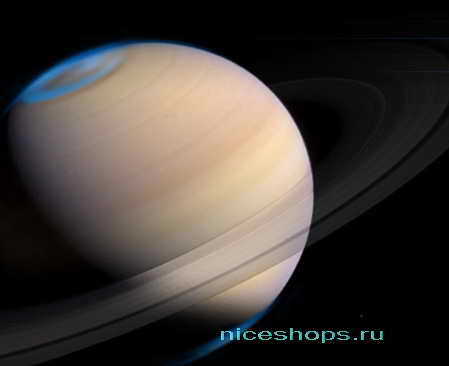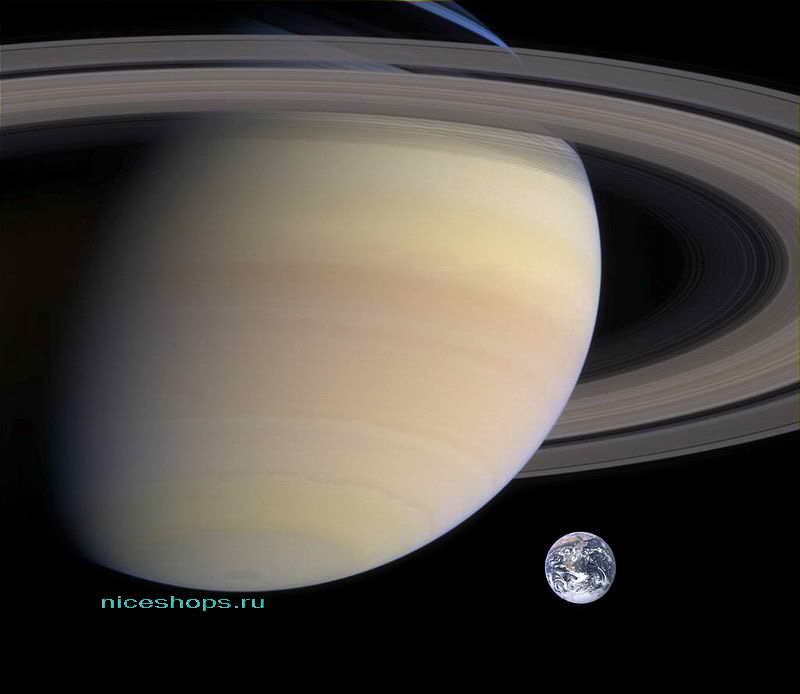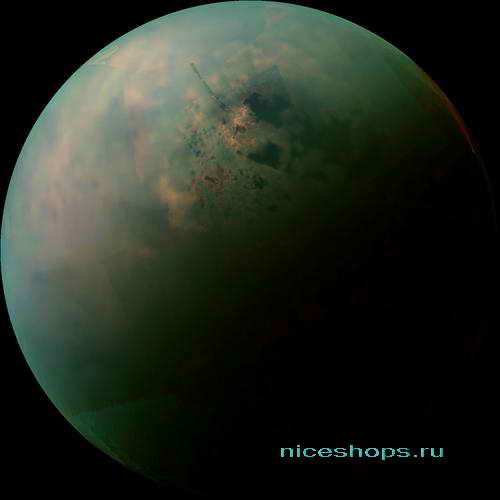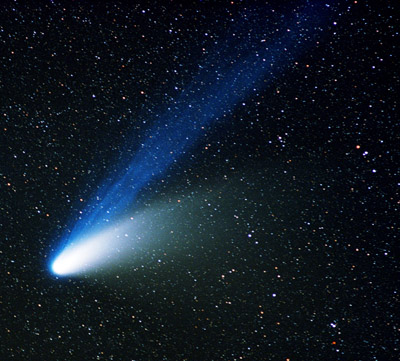Solar system interesting facts. Celestial bodies of the solar system: new information about Saturn
Discovered in the sky by Galileo Galie in the 17th century, Saturn remains one of the most mysterious celestial bodies to this day. solar system. The most interesting information about Saturn on this moment humanity receives thanks to the NASA Cassini mission, which has been exploring the planet and its satellites since 2004. The last series of space telescope flights around Saturn in August 2015 made it possible to collect unusual scientific information - one of the rings of a celestial body has a strange structure.
Twice a year - and on Saturn a year is equal to 29 Earth years, the solstice comes. During this period, which lasts about two days, the rays of the outgoing star illuminate and heat the rings of a celestial body that is unique in the solar system to the maximum. When the planet plunges into darkness, its striped "skirt" cools down. During this short period of time, the scientists of the Cassini-Huygens mission had a unique opportunity to study in detail the nature and composition of Saturn's ring structure. The route of the Cassini orbiting telescope-spectrograph was calculated so that at the right time it would fly at the closest distance from the planet and collect new data.

The Cassini space telescope-spectrograph explores Saturn
Interesting to know. Saturn's rings are made up of trillions of ice particles covered with a thin layer of rigolite. The diameter of ice formations ranges from microscopic to large: on the order of tens of meters. Outside, they are covered with a mass of petrified "thorns" and look like snowflakes under a microscope. Ice particles constantly rotate around Saturn's equator, forming a ring structure about 100 thousand km wide.

Conditional division of the ring structure of Saturn into zones
The Cassini infrared spectrometer is an apparatus that can measure the degree of heating of the celestial bodies of the solar system by analyzing the wavelength of the color spectrum. By measuring the temperature of the ice debris in various zones of Saturn's belt, the scientific team was able to systematize the information and came to an interesting conclusion.

The Cassini mission has collected new information about the celestial bodies of the solar system, including structural features of Saturn's rings.
Planet Saturn: interesting facts and hypotheses
According to scientific minds, the ring system of Saturn, which is non-standard for other celestial bodies in the solar system, could have been formed after the collision of the planet with some kind of cosmic object. Due to the strong gravity of Saturn, the particles of the destroyed celestial body did not dissipate in space, but were grouped around the planet.

An interesting fact is that on Saturn there are auroras similar to those on Earth.
According to another hypothesis, the attractive force of Saturn is not enough to include free particles in its dense structure, but it is quite enough to keep them in the form of a belt. The most reliable assumption is that at the birth of the solar system (about 5 billion years), Saturn was surrounded by many satellites - celestial bodies, which were gradually attracted and destroyed by planetary gravity. Clouds of ice left after the collapse of the satellites transformed into an annular belt.

Another interesting find of scientists is a hexagonal cloud constantly hovering over the pole of Saturn. It looks especially impressive against the backdrop of the northern lights.
Cassini mission: new information about Saturn
Having built a computer model of Saturn in accordance with the information collected by the Cassini mission, scientists have discovered a strange anomaly in the behavior of the celestial body's ring system under the influence of sunlight. The fact turned out to be extremely interesting: one of the regions of zone A in the rings of the planet did not cool down on a par with other particles, but continued to remain in a heated state. After studying the nature of the unusual phenomenon, the researchers came to the conclusion that the strange zone consists of fragments of the former satellite of Saturn, destroyed under the influence of its gravity. 
This is how small our Earth is in relation to the gas giant - Saturn
An unusual segment of the belt is composed of very dense ice fragments about 1 meter in size. Scientists believe that the discovered zone in the rings of Saturn is much younger than other celestial bodies in the solar system - it was formed several million years ago. The Cassini mission, launched to purposefully study Saturn and its moons, is in its final stages. A series of final flights over the planet will be aimed at measuring the density and mass of the rings to more accurately determine the age of the planet and the encircling structure. The epoch of the study of Saturn will be the entry of the Cassini orbital station into the planet's gas layer to study its composition.
Interesting to know. Saturn, along with Jupiter, Uranus, Neptune, belongs to the gas giants - the celestial bodies of the solar system with a dense core of metals and ice. The outer layer of the planet is formed from gases: helium, hydrogen, methane, ammonia. Saturn orbits 62 satellites, the largest of them is Titan, a mysterious celestial body with a dense atmosphere, seas and rivers filled not with water, but with liquid methane.

Saturn's moon is Titan, the only celestial body in the solar system (other than the Earth) that has a liquid medium on its surface.
More modern equipment, powerful space telescopes, innovative methods research is the basis for obtaining new scientific information about the celestial bodies of the solar system. So we are gradually approaching the solution: who are we? how did you get to earth? what is the age of our universe? What celestial bodies other than Earth are habitable? All the secrets of the cosmos will soon be revealed to us.
umniku.ru/tag/ solar-system a
Artists' view of the asteroid belt
Do your friends think that you know a lot of interesting information about asteroids? But do you really know everything about them? Okay, here are some interesting facts about asteroids, some of which you may already know, but others that will hopefully surprise you. Asteroids are very interesting objects that should be better studied.
1. Asteroids and planets appeared at the same time.
The process that helped form the planets can be called "growth". At the beginning of the formation of the Universe, the collision of two bodies usually led to the formation of one larger body. Planets and asteroids were formed in this way. Apparently the planets have accumulated more mass than most asteroids. But as seen with Ceres, which is a dwarf planet, some asteroids are very close to reaching a mass that would create enough gravity to become planetary.
2. An asteroid is made up of various materials.
Asteroids are made from various minerals and substances. Their composition depends on the planet they are done away with in the collision, and also on chemical reactions that they may have experienced while orbiting our solar system. Metal asteroids are made of 80% iron, the rest are nickel compounds with some other metals mixed in, such as iridium, palladium, platinum and gold. Some are also half made of silicate and metals.
Asteroids were classified into four groups according to their composition:
C class asteroids
D class asteroids
S class asteroids
Class V asteroids
3. Most asteroids are covered in dust.
This dust is called regolith. It appears as a result constant clashes between asteroids and any other body that crosses their path. The larger object wins and gets covered in dust from the losing object.
4. Asteroids are shaped by collisions.
Almost every object in space, including the Earth, was shaped in one way or another by a collision. Every celestial body has at least two craters on its surface. These collisions can destroy an asteroid or lead to a merger of asteroids. The collision can cause changes in the orbit - rotation or axial tilt.
5. An asteroid may have killed the dinosaurs.
Chicxulub crater is thought to be about 65 million years old. And perhaps he is the source of climate change, which led to the extinction of all dinosaurs. One can imagine what fragments and clouds of dust were thrown into the air after the fall of this asteroid, so large that the crater from its impact on Earth reaches more than 180 km in diameter. Those dinosaurs that did not die immediately probably suffered from starvation. Terrible!
6. Asteroids have satellite moons.
Spaceship Galileo proved this point back in 1993, when he investigated the flight of asteroid 243 (Ida) and discovered its lunar dactyl. The asteroid was the first non-planet object discovered with its own "moon". Since then, several other similar objects have been discovered, but the first discovery was the most exciting for astronomy.
7. Asteroids like to cluster.
There are four main groups in which asteroids are grouped: the Main Belt, the Cooper Belt, the Trojan Belt, and the Scattered Disk. The Oort cloud is another group of asteroids that is too far out in space to be well studied by today's means, and therefore all that is known about it is in theory. The orbit of the Main Belt is between Jupiter and Mars. Interestingly, the vast majority (up to 98%) of known asteroids move precisely between the orbits of these two planets. Theoretically, scientists suggest that Jupiter's gravitational anomalies prevented the Main Belt from becoming a separate planet. The scattered disk is a subset of the Cooper belt. Since their orbits are far from the Sun, they are the coldest objects in the solar system. Astronomers now believe that the Scattered Disk is the origin of most periodic comets. Many of the objects in the Oort cloud likely originated in a scattered disk.
The sun is the center of our solar system, a lot of what happens on Earth depends on it. Therefore, it is interesting to know what the Sun is like, what is happening there.
The Sun is an ordinary star, its age is about 5 billion years, the surface temperature is 5500C, the distance from the Earth is 149.6 million km. At the center of the Sun, the temperature reaches 14 million degrees.
The sun gives the Earth heat and light, supports life on our planet.
The Sun is a fireball of gas, 109 times the diameter of the Earth. More than a million celestial bodies the size of the Earth could fit inside such a ball.
There are spots on the surface of the Sun, bright flashes and explosions of colossal force occur. Solar flares and explosions throw a huge mass of electrically charged particles into space, which affects the Earth's atmosphere. When streams of electrically charged particles reach the Earth, they create amazing "curtains" of flickering light in our sky, which are visible in the circumpolar regions and are called auroras. Powerful explosions occurring on the Sun are fraught with danger. Streams of electrically charged particles flying from the Sun disable power plants, destroying their equipment. Solar flares are also dangerous for astronauts: you should not go out into outer space when they happen. The particles emitted by the flash and carrying a lot of energy can harm the human body. On Earth, too, one should not be under the scorching rays of the Sun for a long time. You can get severe burns of the skin and its diseases, as well as cause a disorder in the activity of the heart and nervous system.
The existence of the Earth and life on it directly depend on the Sun. The question arises: how long will our luminary last? Scientists have come to the conclusion that the Sun will not exist forever, although it has an incredibly long life ahead of it. The Sun is now in middle age. Scientists suggest that over the next 5 billion years, the Sun will slowly warm up and increase slightly in size. When all the hydrogen in the Sun's central core is used up, the Sun will be three times as large as it is now. All the oceans on Earth will boil away. The dying Sun will swallow the Earth. Ultimately, the Sun will cool down, turning into a ball, the so-called white dwarf.
But all this will happen in billions of years, many thousands of generations will change on Earth. Rapidly developing science and technology will allow mankind to discover new worlds and planets in the Universe and master them in advance for living and further development of mankind.
And today we should take care of our planet, follow the advice and requirements of environmentalists. After all, the preservation of life on Earth depends on each of us.
other celestial bodies.
Comets
Rushing at great speed and traveling along huge orbits laid in the universe, comets, as these celestial bodies are called, consist of a bright luminous head and an incredibly long (up to 100 million km) tail plume. These solitary wanderers can move away for a long time outside the solar system and return to rush closer to our planet, moving overcoming the gigantic distances of their orbit.
asteroids
Like planets, only very small in size, asteroids revolve around the Sun, they have a rocky surface structure and in some characteristics are similar to small planets, therefore they are sometimes called "minor planets". The largest accumulation of asteroids is located between Mars and Jupiter, this zone is called the "asteroid belt". Asteroids have a variety of sizes: small ones from a few tens of centimeters in diameter, like a kitchen saucepan, and large ones with a diameter of up to 250 km and more. So the largest of the known asteroids Ceres has a diameter of 1000 km. meteorites
Shooting stars are the name given to the meteor shower that occurs each year in early August and at other intervals throughout the year. Sometimes "shooting stars" meteorites can be seen with the naked eye, they flash like a spark that strikes the blue of the night sky for a fraction of a second. These are small particles of cosmic dust that fall to the Earth and, evaporating in the dense layers of the atmosphere, leave a short bright trace in the starry sky.
A comet is a celestial body of small size, consisting of ice interspersed with dust and stone fragments. As it approaches the sun, the ice begins to evaporate, leaving a tail behind the comet, sometimes stretching for millions of kilometers. The tail of a comet is made up of dust and gas.
comet orbit
As a rule, the orbit of most comets is an ellipse. However, circular and hyperbolic trajectories along which ice bodies move in outer space are also quite rare.
Comets passing through the solar system

Many comets pass through the solar system. Let's focus on the most famous space wanderers.
Comet Arend-Roland was first discovered by astronomers in 1957.
Comet Halley passes near our planet every 75.5 years. Named after the British astronomer Edmund Halley. The first mention of this celestial body is found in Chinese ancient texts. Perhaps the most famous comet in the history of civilization.
Comet Donati was discovered in 1858 by the Italian astronomer Donati.
Comet Ikeya-Seki was noticed by Japanese amateur astronomers in 1965. Differed in brightness.
Comet Lexell was discovered in 1770 by the French astronomer Charles Messier.
Comet Morehouse was discovered by American scientists in 1908. It is noteworthy that photography was used for the first time in its study. Distinguished by the presence of three tails.
Comet Hale-Bopp was visible in 1997 to the naked eye.
Comet Hyakutake was observed by scientists in 1996 at a small distance from the Earth.
Comet Schwassmann-Wachmann was first noticed by German astronomers in 1927.

"Young" comets have a bluish tint. This is due to the presence of a large amount of ice. As the comet rotates around the sun, the ice melts and the comet takes on a yellowish hue.
Most comets originate from the Kuiper Belt, a collection of frozen bodies near Neptune.
If the tail of a comet is blue and turned away from the Sun, this is evidence that it consists of gases. If the tail is yellowish and turned towards the Sun, then there is a lot of dust and other impurities in it that are attracted to the luminary.
Study of comets
Scientists obtain information about comets visually through powerful telescopes. However, in the near future (in 2014), the launch of the ESA Rosetta spacecraft is planned to study one of the comets. It is assumed that the device will be near the comet for a long time, accompanying the space wanderer on her way around the Sun.

Note that earlier NASA launched spacecraft"Deep Impact" for a collision with one of the comets of the solar system. Currently, the device is in good condition and is used by NASA to study icy space bodies.






